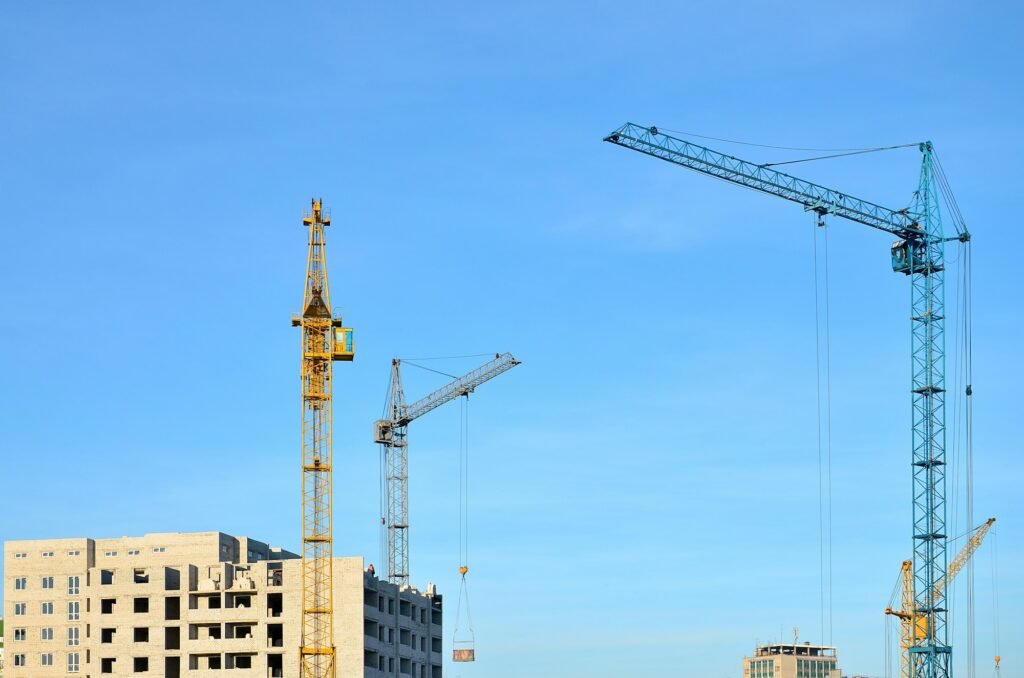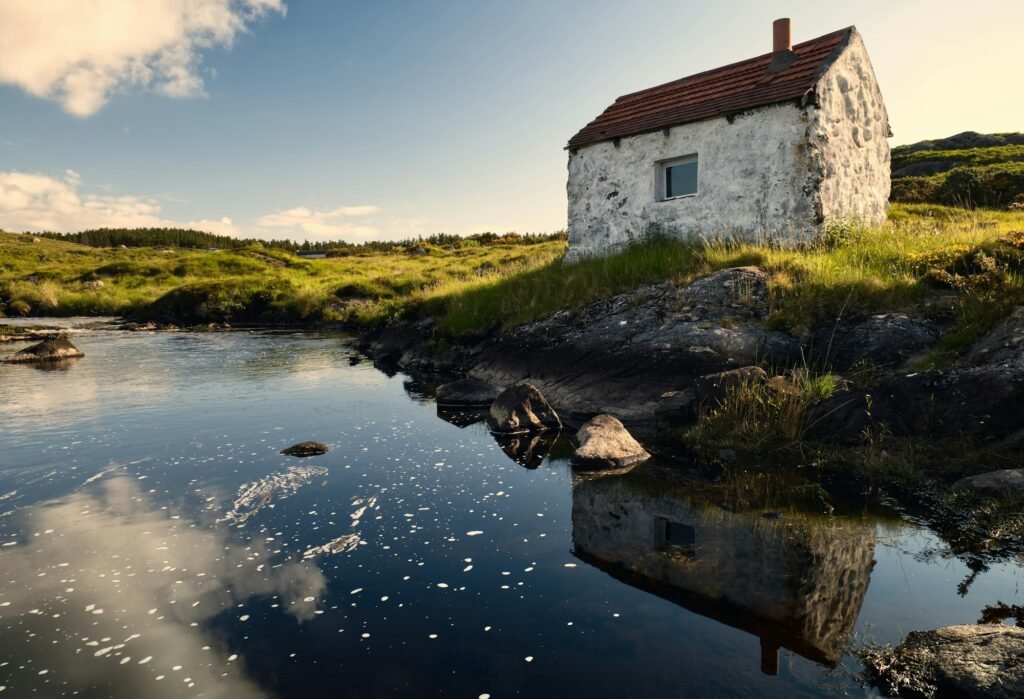Why We Need to Build Up Instead

The Problem with Expanding Outward
Ireland, like many other countries, faces significant challenges when considering horizontal expansion as a solution to housing shortages. One primary concern is the loss of arable land and natural habitats, which often accompany suburban sprawl. As urban areas stretch outward, the available land for agriculture diminishes, affecting local food production. Additionally, ecosystems that support biodiversity are disrupted, leading to a loss of wildlife and natural resources that are hard, if not impossible, to replace.
Another critical issue is the increased dependency on automobiles. Horizontal expansion necessitates longer commutes, making public transportation less viable and increasing the reliance on private vehicles. This surge in automobile usage not only contributes to higher carbon emissions but also exacerbates air pollution and its adverse effects on public health. The environmental toll of extended car usage is significant, making this growth model far from sustainable.
The strains on infrastructure and public services represent another challenge with suburban growth. Expanding outward means that the existing infrastructure, including roads, water supply, and sewage systems, must also stretch to cover larger areas. This expansion is both costly and inefficient. Spreading services such as healthcare, education, and emergency response over a wider area introduces logistical complexities and elevates operational costs, making the entire system less efficient.
Furthermore, the economic inefficiency of spreading resources across a broad expanse cannot be overlooked. The municipal costs associated with maintaining extended areas are considerably higher compared to those for denser, more compact urban environments. In elongated cities, essential services like waste collection, law enforcement, and public transportation require more resources, which can strain local budgets. These inefficiencies accumulate over time, leading to higher taxes and reduced quality of services, which can deter potential residents and investors.
In addition, the long-term unsustainability of horizontal growth poses a significant concern. Given the finite nature of land, continuing to expand outward is a temporary solution at best. This model does not adequately address the enduring challenges posed by population growth and housing demand. Without a shift towards more sustainable and efficient housing solutions, such as high-rise apartments, Ireland risks amplifying its current housing problems instead of resolving them.
Benefits of Building Upwards: Environmental and Economic Perspectives
Building upwards, rather than outwards, presents numerous advantages from both an environmental and economic standpoint. One of the primary benefits of vertical construction, such as high-rise apartments, is the significant reduction in urban sprawl. By concentrating housing within a smaller footprint, cities can preserve much-needed green spaces and natural habitats, thus maintaining biodiversity and offering recreational areas for residents.
Moreover, vertical housing solutions can substantially mitigate environmental pollution. High-density living reduces the need for extensive commuting, leading to a decrease in vehicular emissions and lower carbon footprints. Ireland, for example, can benefit from the reduction in pollution levels by promoting high-rise developments in urban areas, making the cities both greener and cleaner.
From an economic perspective, building upwards can be a more cost-effective solution. High-rise apartments make the most efficient use of existing infrastructure, such as roads, water supply, and sewage systems, alleviating the need for costly expansions. Additionally, the concentration of housing can enhance the efficiency of public transportation networks, making them more viable and reducing the per capita cost of utilities and services.
Consider the success stories of high-density urban areas like Tokyo and Singapore. These cities have thrived economically while maintaining high standards of living for their inhabitants. The dense population in these regions supports a robust public transport system and localized business growth, which in turn leads to vibrant, economically prosperous communities. This model demonstrates how building upwards can create sustainable, economically resilient urban environments, even in countries like Ireland.
In conclusion, the environmental and economic benefits of vertical housing solutions are compelling. By adopting high-rise construction, cities can preserve green spaces, reduce pollution, and enjoy more efficient infrastructure use while simultaneously fostering economic growth and improving public transport systems.
Social and Community Benefits of Vertical Living
High-rise and vertical living provide substantial social and community benefits, particularly in Ireland’s urban environments. A key advantage is a potential for fostering a sense of community in denser settings. Vertical developments can create social hubs where residents interact more frequently, building relationships and a collective identity. The close proximity of homes increases the likelihood of spontaneous social interactions, enhancing community cohesion.
Moreover, high-rise apartments often improve access to amenities and public services. By integrating essential services such as grocery stores, gyms, and schools within or near high-rise complexes, residents benefit from convenient access to daily necessities. This proximity not only enhances quality of life but also reduces dependency on private vehicles, promoting sustainable living practices.
Creating more walkable and vibrant urban areas is another significant benefit. High-density housing solutions encourage the development of pedestrian-friendly zones where foot traffic supports local businesses and street-level activities. This setup invigorates the urban landscape, making it more dynamic and inclusive. Vertical living fosters environments where people are more likely to walk, thereby improving overall public health and contributing to lower carbon emissions.
Despite these advantages, common misconceptions about high-density living persist. There are concerns about overcrowding and loss of privacy. However, successful design and planning can mitigate these issues effectively. For instance, incorporating spacious common areas and green spaces within high-rise projects can alleviate the sense of overcrowding. Thoughtful architectural designs ensure adequate privacy through appropriate spacing and soundproofing.
Integrating social infrastructure such as parks, schools, and healthcare facilities is crucial for creating a holistic living experience in high-rise environments. These elements encourage outdoor activities and community engagement, further enriching the social fabric. By including such facilities within high-rise projects, urban planners can address residents’ needs comprehensively, ensuring that the transition to vertical living is seamless and benefits the wider community.
Sustainable Urban Planning: Policies and Innovations
In the context of Ireland’s housing crisis, sustainable urban planning is an essential cornerstone in developing high-rise apartments as a viable solution to increasing urban density. Government regulations play a pivotal role in promoting high-density developments by establishing specific zoning laws, building codes, and incentives for developers to pursue vertical construction. These policies are geared not just toward augmenting the housing supply but also toward creating sustainable, livable environments within our cities.
Central to this vision is the implementation of energy-efficient and environmentally friendly technologies. High-rise buildings can dramatically reduce the per capita consumption of land and resources, but they must also adopt innovative construction methods to be truly sustainable. Modular construction, for instance, allows for quicker, cost-effective building processes while minimizing waste. Green roofs and vertical gardens further enhance the environmental benefits by improving air quality, reducing urban heat island effects, and augmenting the insulation properties of these structures.
Smart city technologies are another facet of sustainable urban planning. Leveraging these technologies, city planners and architects can optimize resource management and improve the quality of urban life. Intelligent systems for energy use, waste management, and water conservation can be integrated into high-rise apartments to create self-sustaining communities. Furthermore, innovations such as advanced lighting and HVAC systems operated by IoT devices contribute to the overall energy efficiency of these buildings.
Stakeholders ranging from architects and city planners to developers and policymakers must collaborate extensively to ensure these high-rise projects meet sustainability benchmarks. The integration of renewable energy sources such as solar panels and wind turbines can further enhance the ecological footprint of vertical living solutions. By thoughtfully incorporating these technologies and planning principles, Ireland can make significant strides toward resolving its housing issues while fostering sustainable urban growth.




